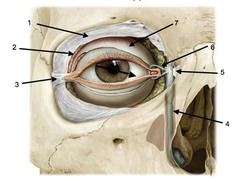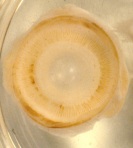What is going on when a baby is shaken? A recent report suggests that shaking a baby can cause a subdural hematoma, which can lead to death. Some parents may be wrongfully accused of shaking their baby, when toxins running under the skin might have caused the hematoma.
 This is a comment on “Rethinking Shaken Baby Syndrome” on Morning Edition 29 June 2011.
This is a comment on “Rethinking Shaken Baby Syndrome” on Morning Edition 29 June 2011.
You do not have to swallow or breathe in toxins to get them inside the body. They can enter through the eyes.

Summary
This is part of a series of reports on child deaths, done in collaboration with ProPublica and PBS Frontline. NPR reporter Joseph Shapiro discussed findings on Shaken Baby Syndrome with Dr. Norman Guthkelch, who wrote the paper defining Shaken Baby Syndrome (Guthkelch 1971). He was trying to explain an odd symptom that appeared in babies who died suddenly without any evidence of abuse. He explained its possible occurrence from the observation that parents at that time in Northern England often punished their children by shaking them. He found to his horror that prosecuting attorneys were using his paper as evidence against a person accused of shaking a baby to death. Even though most prosecutors use subdural hematoma as evidence they also use two other symptoms, bleeding behind the retina and brain swelling. However Guthkelch is still alarmed that a cause of death as Shaken Baby Syndrome is reached based upon only this triad of symptoms. Some experts think that there is already too much science so that abusers get away with killing their infants.
My Comments at NPR
For the life of me, I cannot imagine punishing an infant at all, let alone by shaking them. If they cry and won’t stop, the parent hasn’t found what the baby is crying about, and needs to investigate further, no matter how much that infant gets in the way of the parent getting anything else done. If a parent knows what the baby is crying about, that is the cost of doing what the parent did to cause it, or by not doing something to ease that baby’s pain. Shaking a baby does nothing to ease that pain. However, many parents may be only gently shaking that baby and bouncing it up and down in their arms. Such actions should not be causing the symptoms we see in shaken baby syndrome.
In fact I strongly suspect that all shaken baby symptoms are either maliciously given to the baby in very strong actions or the baby has been exposed to toxins which are responsible for weakening blood vessels and doing damage directly to the brain. No one in this report or in any report I have seen on other news programs has ever suggested toxic damage. No doubt this is because the forensic doctors cannot imagine how a toxin that others may not notice could do such damage to a baby. There are some very strong, and insidious toxins in the air, which we may not notice at all because they do not trigger pain nerves to respond but do such damage that could explain all the symptoms presented in this report. I discuss what these possibilities are in my blog posting “Toxins and the Eyes” at https://marthalhyde.wordpress.com/2011/07/02/toxins-and-the-eyes/
How Toxins Cause Hematomas & How They Get Inside the Body
We must also consider another cause of the subdural hematoma, retinal hemorrhage, and brain swelling, without any other signs of abuse. Exposure to certain toxins could also cause broken blood vessels. I suspect that doctors cannot imagine how a toxin could get into the brain and break only blood vessels there because they think that a toxin entering the body would rapidly enter blood circulation, and either must cross the skin or pass into the body via the mouth or nose. They cannot assess brain damage, either, since the baby is dead, other than by seeing anatomical changes. It is time that we consider a thought experiment–something rarely used in biology but used constantly in physics, math, and chemistry.
If we think carefully about the chemistry, we would realize that there are toxins that would not do damage to the skin (because it is a very thick epithelium, covered with dead cells that cannot transport many chemicals), but would do damage to connective tissue, thus injuring or hampering blood vessel activity (See “Toxins”). Others could do damage only to very thin epithelium, such as the cornea or capillaries. Both types of toxins could enter the brain through the eyes, the second one if preceded by the first one.


There is nothing but connective tissue between the world outside and the brain when you consider the route via the eye sockets. The eyeballs do not fit so snugly in them that they block all transport to the brain, because they wouldn’t be able to move otherwise. There are ligaments holding the eyes inside those sockets (see Figs. 2 and 3, Periorbitum and Tarsal Plates, both made of dense connective tissue) which could be damaged by the first type of toxin, and thus become porous to the second type of toxin. There is loose connective tissue packing between those ligaments, and behind the eyeball in the optic foramen which carries the optic nerve, packed around the nerve. Again, the nerve is not so snug that a chemical cannot get past it.


The second type of toxin, attacking epithelium, could easily cause the broken blood vessels behind the retina, since it could pass through the conjunctiva, cornea (Fig. 4 above), between the strands of the suspensory ligament of the lens (see Fig. 5, the white ring around the glistening lens in the center), get taken up by the vitreous humor, leak under the retina in the spaces between nerve cells there, and do massive damage to the choroid layer, where all the blood vessels supplying the retina lie.
We can conclude from understanding the anatomy of the eye that the symptoms now used to determine Shaken Baby Syndrome could easily be used to suggest exposure to dangerous toxins, something not apparently considered by these doctors.
References
Guthkelch, A.N. (1971). Infantile subdural haematoma and its relationship to whiplash injuries. British Medical Journal 2(5759), 430–431.
Fig. 1. Shaken Baby Symptoms
Fig. 2. Eye in Socket Held in Place with Periorbitum (1) and Tarsal Plate (7)
Fig. 3. Tarsal Plates of the Eye (1,3) and Check Ligaments (2,4)
Fig. 4. Anatomy of the Eye
Fig. 5. Suspensory Ligaments of Lens
Other reports in this series (I have left comments at some of these):
The Child Cases: Guilty Until Proved Innocent
Rethinking Shaken Baby Syndrome
Flawed Autopsies Send Two Innocent Men To Jail
Post Mortem: Death Investigation In America
The Child Cases: Lessons from Canada Is The ‘CSI Effect’ Influencing Courtrooms?
The Real CSI: Death Detective Dysfunction
California Officials Reviewing Autopsies Done By Doctor With Trail Of Errors
Parents Fight To Find Truth Behind Daughter’s Death
Autopsy Cutbacks Reveal ‘Gray Homicides
Second Chances Shows Flaws In Death Investigations
Coroners Don’t Need Degrees To Determine Death
ProPublica: The Child Cases
Frontline: The Child Cases
Watch the Frontline Special Shaken Baby Syndrome: A Diagnosis Challenged
Keep up with new posts I make by subscribing to this blog: go to the top and click on “Subscribe” in the gray WordPress Choice Bar (if you are already registered in WordPress.com and have logged in) or when you comment on this blog, click on the “notify” check boxes.
© Copyright 2014 by Martha L. Hyde and https://marthalhyde.wordpress.com.

Hi, i read your blog occasionally and i own a similar one and i was just curious if you get a lot of spam feedback? If so how do you prevent it, any plugin or anything you can recommend? I get so much lately it’s driving me mad so any support is very much appreciated.
My blog is Anxiety attacks.
LikeLike
Yes I get a lot of spam, and interestingly, WordPress automatically called your comment spam. I just have to slog through them all. Sometimes WP calls a comment spam just because a person enters a URL associated with them. Often I get comments marked as spam but they are clearly written by someone who does not write in English very well. They could be just ignorant Americans, but they may be voices from not-so-freely democratic countries where access may be monitored. Thus the commenter may make up a URL to and a name, and may have set up a fake email account that is only temporary just to be able to feel like they are freely voicing an opinion, even if they end up cutting and pasting the same comment at different sites. I have to judge each comment separately with this in mind. (see my own posting at http://www.npr.org/2011/09/03/140163727/voice-of-americas-role-in-internet-age on this topic).
LikeLike